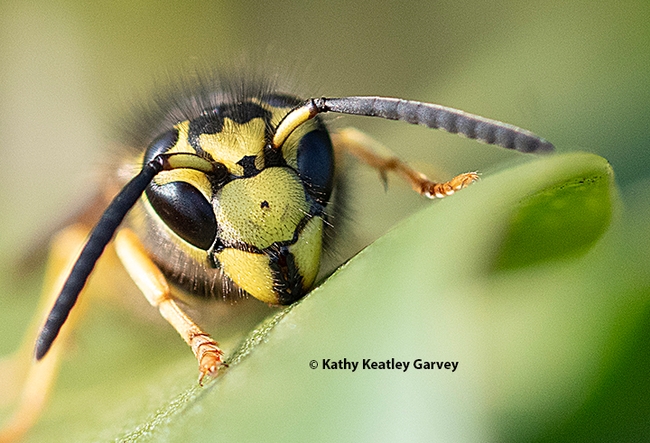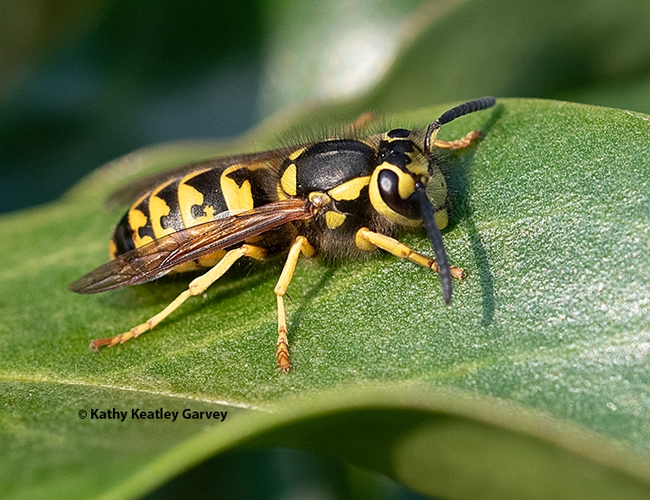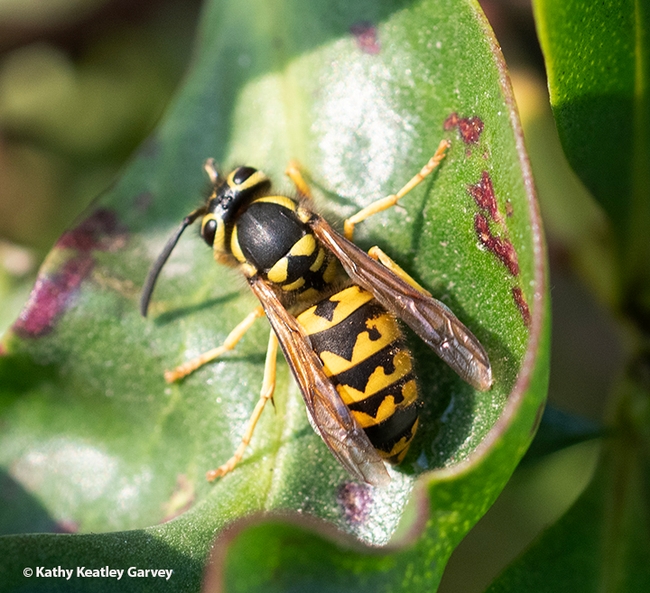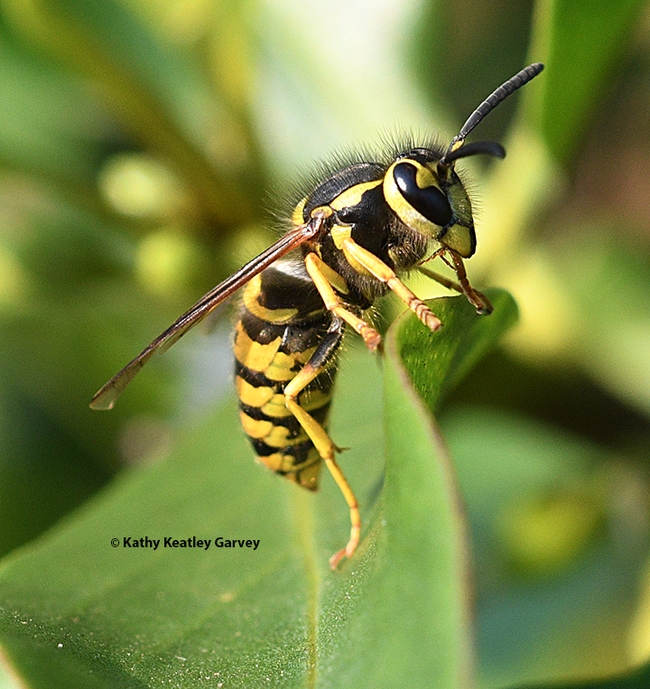Who takes images of yellowjackets?
What, nobody?
I don't usually photograph yellowjackets because (1) I prefer to take images of their cousins, the honey bees and (2) yellowjackets are always moving. By the time I observe one, and raise the camera, the insect is long gone.
You've probably seen yellowjackets hosting their "huge family reunions" at your picnic table. These uninvited guests help themselves to your food, especially such protein as hamburgers and hot dogs--and sugary substances like cake and soft drinks. Avoid the 'jackets. They can be very aggressive.
However, a trip on Aug. 31 to Doran Regional Park Beach, Bodega Bay, proved to be "Yellowjacket Portrait Day" or "Getting Social with a Social Wasp." It all began around dawn when I noticed movement in a blooming Myoporum (a genus of flowering plants in the figwort family, Scrophulariaceae).
Then I spotted a western yellowjacket, Vespula pensylvanica, staring at me. Take my picture! C'mon! I'm a social wasp. Don't you think I deserve a picture, what with all you humans forever targeting me?
Okay, stay still. Don't return to your nest right now. And if you do, don't bring back your nestmates."
"Yellowjackets are social wasps that build large, hidden nests," writes Lynn Kimsey, director of the Bohart Museum of Entomology and a UC Davis distinguished professor of entomology, on an online fact sheet. "The nests are usually subterranean in rodent burrows or in cavities in trees, walls or attics. "
"Yellowjacket nests can be huge with 50,000 to 100,000 workers," Kimsey points out. "In temperate climates these colonies are annual. Their nests die in the fall after producing new queens. New queens produced by the colonies in the fall spend the winter in protected places until spring when they found new colonies. Yellow jacket colonies can become perennial in warmer climates, such as in Hawaii and coastal California. In these situations the nests can become enormous, with millions of workers!"
Says the UC Statewide Integrated Pest Management (UC IPM) Program in its Pest Note on "Yellowjackets and Other Social Wasps": "In California, yellowjackets are the primary pests among the social wasps. In Western states there are two distinct types of social wasps—yellowjackets and paper wasps. Yellowjackets are by far the most troublesome group, especially ground- and cavity-nesting ones such as the western yellowjacket, which tend to defend their nests vigorously when disturbed. Defensive behavior increases as the season progresses and colony populations become larger while food becomes scarcer. In fall, foraging yellowjackets are primarily scavengers, and they start to show up at picnics and barbecues, around garbage cans, at dishes of dog or cat food placed outside, and where ripe or overripe fruit are accessible. At certain times and places, the number of scavenger wasps can be quite large."
UC IPM goes on to note that "Concern about yellowjackets is based on their persistent, pugnacious behavior around food sources and their aggressive defense of their colony. Usually stinging behavior is encountered at nesting sites, but sometimes scavenging yellowjackets will sting if someone tries to swat them away from a potential food source. When scavenging at picnics or other outdoor meals, wasps will crawl into soda cans and can sting your lips or the inside of your mouth or throat."
However, "Most social wasps provide an extremely beneficial service by eliminating large numbers of other pest insects through predation and should be protected and encouraged to nest in areas of little human or animal activity," UC IPM relates. "Although many animals prey on social wasps—including birds, reptiles, amphibians, skunks, bears, raccoons, spiders, praying mantids, and bald-faced hornets—none provides satisfactory biological control in home situations." (Read more on the UC IPM site)
So what happened to the solo yellowjacket at Bodega Bay? It hung around for several minutes and then took flight.
Attached Images:

A western yellowjacket, Vespula pensylvanica, peers at the photographer. It is on a Myoporum at Bodega Bay. (Photo by Kathy Keatley Garvey)

A western yellowjacket, Vespula pensylvanica, shows its stripes. (Photo by Kathy Keatley Garvey)

Dorsal view of a western yellowjacket, Vespula pensylvanica. (Photo by Kathy Keatley Garvey)

"Okay, I'm hungry. Enough posing!" A western yellowjacket, Vespula pensylvanica, foraging on a Myoporum at Bodega Bay. (Photo by Kathy Keatley Garvey)